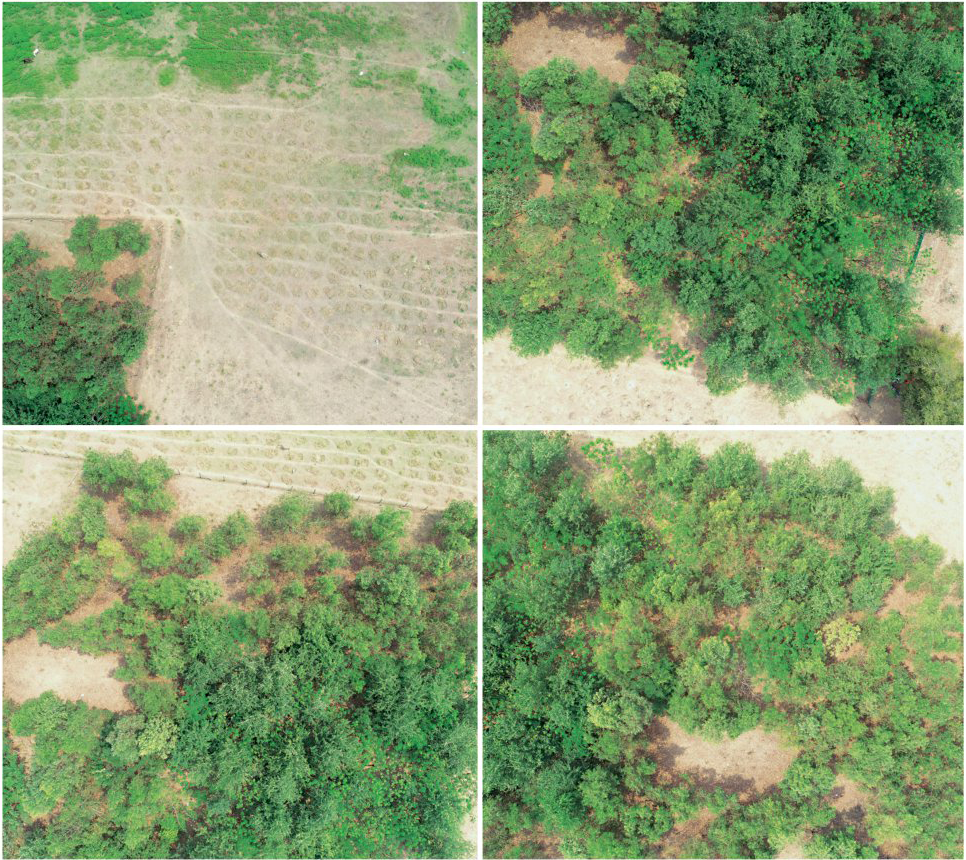A bird’s-eye view for a greener planet

Trees matter. Apart from fulfilling our basic need for good food and fresh air, they help maintain biodiversity, conserve water, preserve soil, control the climate, and so much more. Planting more trees and building new forests can sustain several species that call a tree their home. If trees need to be cut for unavoidable reasons, it is imperative to compensate by planting more or even transplanting these and, of course, nurturing them. Unfortunately, by the very nature of our work, we are forced to cut trees and therefore it is heartening that some businesses take planting trees seriously, like WET IC.
Every financial year, the WET business sets sapling plantation targets as part of their EHS objectives, with the added stipulation that the planted saplings should survive and thrive.
WET IC planted 18.59 lakh saplings in FY2023.
The drone-assisted survivability audit reported that 742 saplings (49.4%) had survived, which took merely 3 hours to complete, in comparison to a physical audit that would normally have taken about 8 hours for an area of similar scale.
The respective site teams conduct regular physical audits to ensure that these 18 lakhs+ saplings survive and to improve the accuracy and authenticity of these audits, and true to L&T’s quest for Technology for Sustainable Growth, they have adopted drone technology. “We identified an agency that provides survivability services by conducting audits using drones,” elaborates K. S. Sudheesh Kumar, Head – EHS, WET IC. “They audit where the saplings have been planted and we have initiated this drone-based ‘photogrammetry’ survey at the Cuttack Wastewater Network project as a pilot.”


We identified an agency that provides survivability services by conducting audits using drones. They audit where the saplings have been planted and we have initiated this drone-based ‘photogrammetry’ survey at the Cuttack Wastewater Network project as a pilot.
K. S. Sudheesh Kumar
Head – EHS, WET IC


At the Cuttack project, the team planted 1,500 saplings near Chahata Chakk, Bidanasi, on 5th June 2019 on the event of World Environment Day, which included neem, Indian beech, Indian rosewood, senna tora, acacia, and calotropis gigantea.

An audit was conducted on 31st March 2023 using stereo photogrammetry technology to check the survival rate of the saplings planted, their height and species. The drone-assisted survivability audit reported that 742 saplings (49.4%) had survived, which took merely 3 hours to complete, in comparison to a physical audit that would normally have taken about 8 hours for an area of similar scale.
To compare and correlate the findings from the drone survey, the site team conducted a physical audit of the same area. It was reported that 823 saplings (54.8%) had survived.
WET IC has plans to conduct the photogrammetry survivability survey of selected sites state-/areawise to understand the overall sapling survival rate.